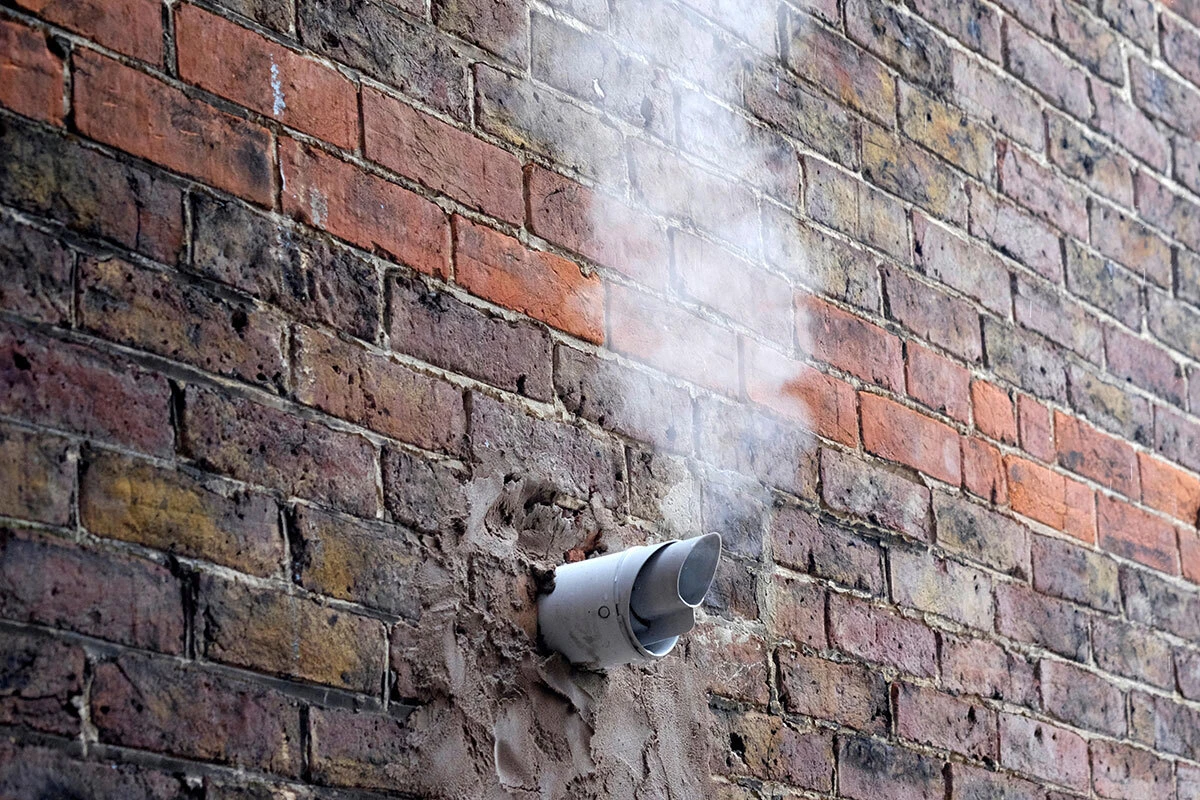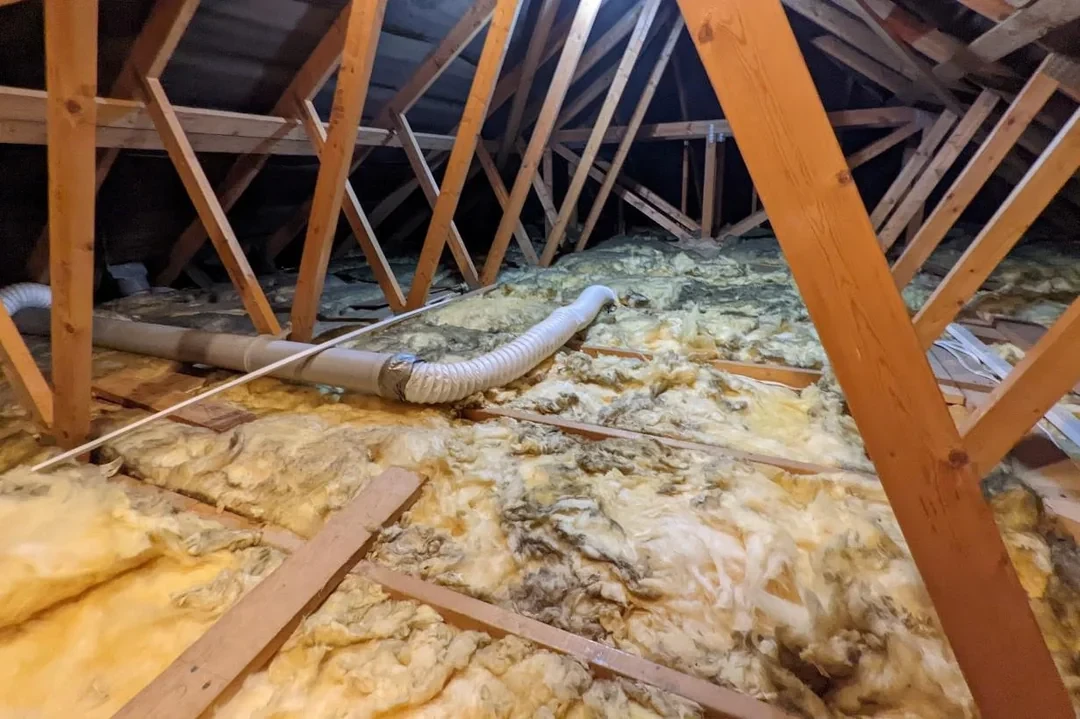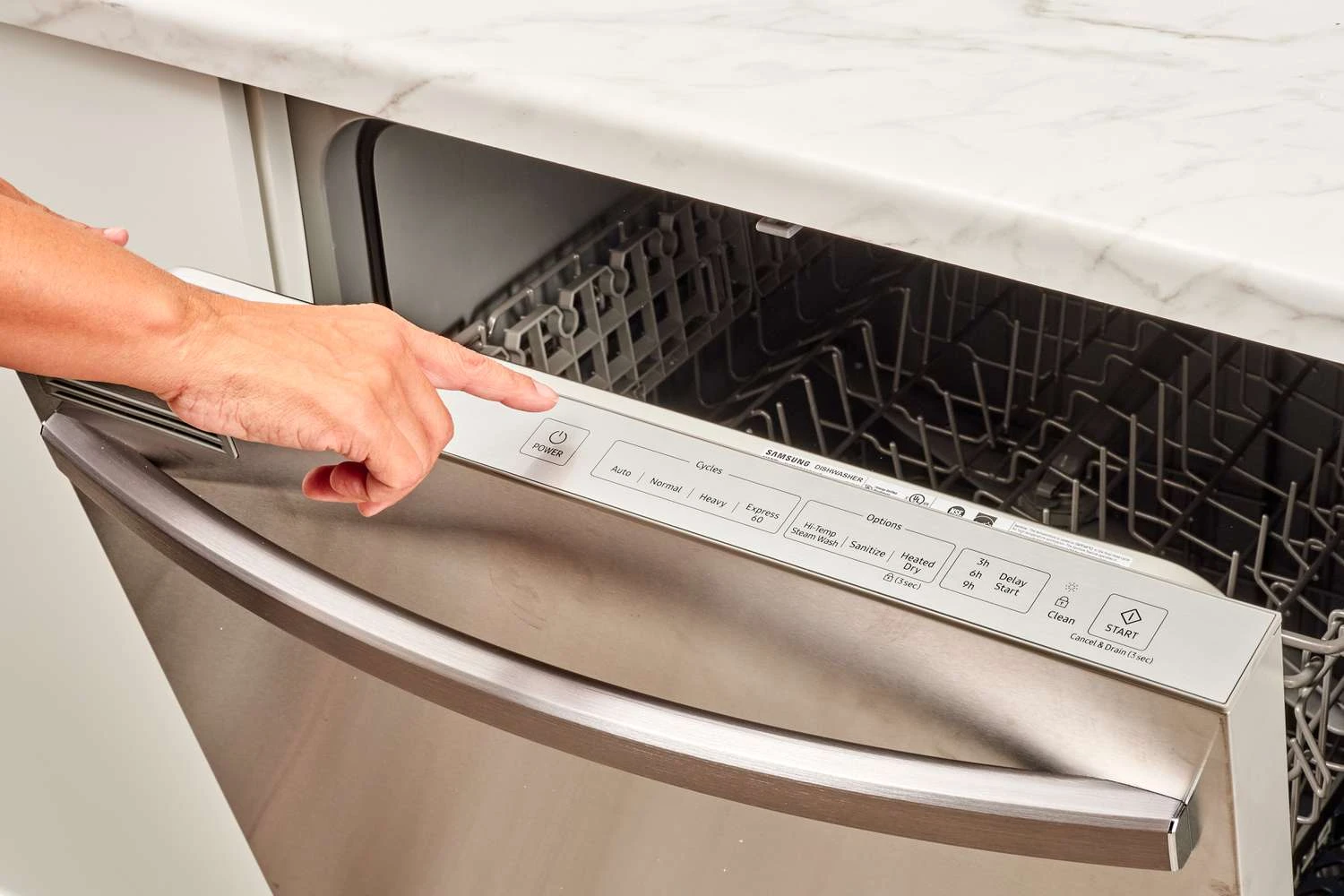09/08/2024
Contents
- Introduction
- What Is The Role Of A Plumber?
- Can Plumbers Install Dishwashers?
- What Are The Steps To Install A Dishwasher?
- What Are The Tools Required For Installing A Dishwasher?
- What Are The Safety Precautions To Take When Installing A Dishwasher?
- Can You Install A Dishwasher Without A Plumber?
- How Much Does It Cost To Have A Plumber Install A Dishwasher?
- Frequently Asked Questions
Introduction
Installing a dishwasher may seem like a straightforward task, but it involves several crucial steps and knowledge of plumbing systems.
This article explores the essential role of a plumber in dishwasher installation, highlighting the qualifications they need and the complexity of the job.
It will guide you through the installation process, list the necessary tools, and outline safety precautions.
Additionally, it discusses whether you can tackle this project without a professional and what costs to expect.
Get ready to gain a comprehensive understanding of dishwasher installation!
What Is The Role Of A Plumber?
The role of a plumber is essential in maintaining the integrity and functionality of plumbing systems in homes and commercial settings, including critical areas like the kitchen. Plumbers are responsible for a variety of tasks including the installation, maintenance, and repair of plumbing fixtures, pipes, and fittings.
With their extensive knowledge and experience, they ensure the proper water supply and drainage systems are functioning safely and efficiently. A skilled plumber also works with other professionals, such as electricians and odd job men, to ensure that appliances and systems operate seamlessly within the home.
Can Plumbers Install Dishwashers?
Yes, plumbers are fully qualified and experienced to install dishwashers in your kitchen, ensuring that both the water and power supply are adequately connected for optimal functionality.
Their expertise allows them to handle the complexities involved in the installation process, including connecting to existing kitchen plumbing and ensuring safety standards are met.
By hiring a professional plumber, you gain confidence in the installation, knowing that your dishwasher will be set up correctly and efficiently, minimising the risk of leaks or electrical issues.
What Are The Qualifications Of A Plumber?
The qualifications of a plumber typically include a combination of formal education, hands-on training, and certification, ensuring they possess the necessary experience and knowledge to perform their duties effectively and safely. Most plumbers complete an apprenticeship programme that covers essential skills like installation, repairs, and compliance with safety regulations. Plumbers may obtain licences and certifications that validate their expertise in handling various plumbing systems, including kitchen plumbing, drainage, and appliance installations.
To embark on this rewarding career, aspiring plumbers often start with a secondary school diploma or equivalent. Following this, they can enter a formal apprenticeship, usually lasting 4-5 years, where they receive guided training under experienced professionals.
During this time, apprentices learn crucial skills such as:
Pipe installation and repair
Fixture installation
Understanding local plumbing codes
Safety protocols and best practices
Hands-on experience is invaluable, as it not only builds technical skills but also fosters a deep understanding of how to work safely within various environments. Obtaining a regional licence often requires passing rigorous exams, thereby ensuring a plumber's adherence to safety standards and local regulations. Ultimately, having these qualifications and certifications establishes credibility in the field, enhancing trust with clients and employers alike.
What Are The Steps To Install A Dishwasher?
Installing a dishwasher involves several important steps to ensure it operates efficiently within your kitchen space. The process typically begins with preparing the installation area, ensuring that both the water supply and electricity supply connections are ready and accessible.
Following this, the plumber or handyman will connect the drainage system properly to prevent leaks before securing the dishwasher in place. Each step is crucial for the safe and effective operation of the appliance, and attention to detail can prevent future repairs and complications.
Preparing The Space
Preparing the space for dishwasher installation is a crucial first step that involves clearing the kitchen area to create a safe and accessible environment for the installation process. This preparation includes measuring the space to ensure the dishwasher fits correctly and checking existing plumbing and electrical connections to confirm they meet the necessary requirements. A well-prepared space can greatly facilitate the installation, reduce the risk of repairs later on, and enhance overall safety.
To achieve a seamless dishwasher installation, accurate measurements are essential—not only for the unit itself but also for the surrounding cabinetry and worktops to ensure that there is adequate ventilation and access to controls. Assessing the accessibility of plumbing and electrical sockets can save time and prevent costly adjustments.
Consider relocating plumbing fixtures if they are not in compliance with the dishwasher's requirements.
Check for electrical sockets nearby to avoid extensive rewiring.
Inspecting existing pipes and wiring for wear or damage is advisable, as this can prevent leaks or electrical issues post-installation. Taking these preliminary steps will enhance the overall efficiency of the project, ensuring the unit operates smoothly and safely from day one.
Connecting The Water Supply
Connecting the water supply is a critical step in dishwasher installation, as it ensures that the appliance can properly fill and operate during cycles. This process typically involves attaching a water supply line to the kitchen plumbing, often requiring the expertise of a plumber to ensure that connections are tight and leak-proof. Properly installed water supply lines contribute to the dishwasher's efficiency and longevity, reducing the likelihood of water-related repairs in the future.
To successfully connect the water supply, one must start by identifying the appropriate location for the supply line, typically near the sink's plumbing.
Begin by turning off the water supply to prevent any accidents.
Next, gather essential tools such as a spanner, PTFE tape, and a screwdriver to assist in securing connections.
Choose the right type of connection, which may involve a compression fitting or a slip joint, depending on the existing plumbing.
Once everything is in place, it’s crucial to double-check all connections for any leaks. Engaging a qualified plumber can greatly enhance the safety of this process, ensuring that everything is set up correctly and efficiently, thus fostering peace of mind for homeowners.
Connecting The Drainage System
Connecting the drainage system for a dishwasher is essential to facilitate the proper disposal of wastewater and prevent any backflow or leaks. This step involves attaching a drainage hose to the sink or disposal unit, and it often requires the skilled hands of a plumber to ensure that the connection is secure and meets safety regulations. Failing to install the drainage system correctly may lead to costly repairs and inconvenience in the future, making this step critical for the overall installation process.
To achieve an effective connection, a range of tools and techniques must be employed. Start by gathering the necessary items, such as drainage hoses, clamps, PTFE tape, and a pipe wrench. The process begins with measuring the correct length for the drainage hose, ensuring it is neither too long nor too short.
Ensure that the hose is firmly attached to the dishwasher’s outlet.
Connect the other end to the sink’s drain or waste disposal unit, securing it with clamps to prevent disconnection.
Use PTFE tape on threaded connections to prevent leaks.
Following appropriate installation standards is essential, as this not only contributes to a functional drainage system but also ensures compliance with local safety regulations. Neglecting these aspects can lead to leaks, which can cause significant water damage and subsequent repair costs.
Securing The Dishwasher
Securing the dishwasher is the final step in the installation process, ensuring that the appliance is stable and functions correctly without risk of movement during operation. This involves fastening the dishwasher to the surrounding cabinetry or floor, which helps prevent potential damage and repairs in the future. A properly secured dishwasher not only operates more efficiently but also aligns with safety protocols, ensuring it remains in place during its use in the kitchen.
To effectively secure the unit, installers typically employ a few essential techniques and tools. First, they may use brackets or screws, often found in the dishwasher’s installation kit, to anchor the appliance to the cabinetry. A spirit level can ensure that the dishwasher is perfectly aligned horizontally and vertically before securing it. This is crucial, as an improperly levelled dishwasher can lead to malfunction over time.
Tools Needed:
Drill
Screws
Brackets
Spirit Level
Neglecting the securing process can lead to inconvenient issues, such as leaks or inefficiencies, making this step vital for long-term operation and safety.
What Are The Tools Required For Installing A Dishwasher?
The successful installation of a dishwasher requires several essential tools that facilitate each step of the process, ensuring that everything from plumbing connections to securing the appliance is executed effectively.
Common tools used in dishwasher installation include:
an adjustable spanner for tightening connections,
a screwdriver for securing panels,
and pliers for handling hoses and fittings.
Having the right tools to hand not only makes the installation more efficient but also reduces the risk of damage and repairs further down the line.
Adjustable Spanner
An adjustable spanner is a versatile tool essential for dishwasher installation, primarily used to tighten and loosen plumbing connections and fittings. Its design allows it to accommodate various sizes of nuts and bolts, making it particularly useful in tight spaces often found behind kitchen appliances. Having an adjustable spanner on hand ensures that all connections are secure, which is vital for preventing leaks and ensuring the longevity of the dishwasher.
During installation, the adjustable spanner proves critical. It allows users to:
Effortlessly adapt to different sizes of fittings, eliminating the need for multiple tools.
Achieve the correct torque, essential for proper sealing.
Access hard-to-reach areas often involved in plumbing work.
The importance of this tool extends beyond convenience; it plays a crucial role in maintaining safe and reliable plumbing systems. With each connection securely tightened, the risk of leaks diminishes significantly, ensuring a hassle-free operation of the dishwasher for years to come.
Thus, for anyone involved in plumbing tasks, having an adjustable spanner is not just recommended; it is a necessity.
Screwdriver
A screwdriver is a fundamental tool in dishwasher installation, used primarily for securing various components of the appliance in place. Whether it's to attach the door hinges or fasten the water inlet valve, having the right type of screwdriver is essential to achieving a solid installation.
There are several types of screwdrivers that can be employed during this process, each serving specific functions:
Flathead Screwdriver: Ideal for slotted screws, it offers a direct and straightforward approach.
Phillips Screwdriver: This type features a cross-shaped tip which provides better grip on the screw, making it suitable for most dishwashers.
Torx Screwdriver: Often used for security purposes, this screwdriver is perfect for screws that require more resistance to stripping.
By utilising the appropriate screwdriver, one can ensure that all parts are firmly attached, which significantly reduces the likelihood of any future operational issues.
A well-secured dishwasher is not only safer but also functions more efficiently, aligning perfectly with the standards expected in modern kitchen installations.
Pliers
Pliers are another essential tool for installing a dishwasher, used for gripping, twisting, and cutting various components, such as hoses and fittings. Their ability to provide a strong grip is invaluable, especially when dealing with tight spaces and stubborn connections. By using pliers correctly, installers can ensure that all fittings are secure, which is vital for minimising leak risks and maintaining overall functionality during the dishwasher's operation.
In terms of choosing the right type of pliers for the job, different variants serve unique purposes:
Slip Joint Pliers are versatile and can adjust to various sizes, making them ideal for gripping and turning nuts and bolts.
Needle Nose Pliers offer precision, allowing installers to reach tight areas and make delicate adjustments.
Wire Cutting Pliers are specifically designed to snip through wires cleanly, ensuring connections are neat and secure.
Understanding the specific roles of each type of plier contributes significantly to the effectiveness of the installation process. Not only do these tools assist in achieving a seamless fit, but they also play a crucial role in preventing future issues, ensuring that the dishwasher operates efficiently and effectively.
What Are The Safety Precautions To Take When Installing A Dishwasher?
Safety precautions during dishwasher installation are crucial to ensure a secure and efficient setup while minimising risks to the installer and the home.
Key safety measures include:
Turning off the water supply and power supply to avoid any accidents,
Wearing protective gear such as gloves and goggles,
Carefully following the manufacturer's instructions to ensure proper installation.
By adhering to these safety guidelines, you can have confidence in the functionality and safety of your newly installed dishwasher.
Turn Off The Water Supply
Turning off the water supply is one of the most important safety precautions before starting the installation of a dishwasher, as it prevents accidental flooding and water damage during the process. This step ensures that no water is flowing into the appliance while connections are being made, allowing for a safe environment to work in. It's crucial to double-check that the water supply is indeed off before proceeding with any installation steps.
When preparing to turn off the water supply, the homeowner should first locate the main shut-off valve, typically found near the water heater, under the kitchen sink, or on the wall near the appliance. Once the valve is located, it is essential to twist it clockwise until it is completely closed.
Ensuring the water supply is securely shut off is not just a precaution; it is a fundamental step in safeguarding the home from potential leaks. After the valve is closed, it is wise to test it by turning on the tap to confirm that no water is flowing. If no water comes out, the supply is properly off.
Always keep a bucket or towels nearby to catch any residual water when disconnecting hoses.
Document the location of the valve for future reference, making future installations easier.
It might be helpful to inform any household members of this temporary shutdown to prevent confusion or inconvenience.
Wear Protective Gear
Wearing protective gear during the installation of a dishwasher is essential to safeguard against potential injuries and accidents. This includes gloves to protect your hands from sharp edges or tools, goggles to shield your eyes from debris, and proper footwear to provide stability on potentially slippery surfaces. By prioritising personal safety with the right protective equipment, you can work more confidently and focus on completing a successful installation.
Ensuring that you have a well-equipped toolbox can prevent accidents related to incorrect tool usage. The installation process involves various risks, such as electrical hazards and heavy lifting, which can be significantly mitigated with appropriate gear:
Gloves: Prevent cuts and abrasions while handling tools and sharp components.
Safety Goggles: Protect against flying shards from fittings while drilling or cutting.
Steel-Toed Boots: Shield your feet from heavy equipment and offer traction on slippery floors.
Ear Protection: Guard against noise pollution from power tools.
By incorporating these elements into your installation routine, you not only minimise physical risks but also create an environment where concentration can thrive, ultimately leading to a more effective and secure installation outcome.
Follow Manufacturer's Instructions
Following the manufacturer's instructions is a vital safety precaution during dishwasher installation, as these guidelines are specifically designed to ensure the appliance is set up correctly and functions optimally. Each dishwasher model comes with unique instructions that provide detailed information on installation procedures, connections, and safety protocols, which should be adhered to closely. By following these instructions, you can minimise risks associated with improper installation and secure the longevity of your appliance.
When undertaking the installation, it is paramount to remember that these guidelines help prevent common mistakes that could lead to costly repairs or even hazardous situations. Neglecting to follow the proper procedures can result in issues such as:
Poor drainage, causing water to accumulate
Leaking connections that may damage cabinetry
Electrical hazards from incorrect wiring
Avoiding these pitfalls not only ensures the dishwasher operates efficiently but also protects your home from potential damage or safety risks. Taking the time to understand and implement the manufacturer's advice is truly an investment in your appliance’s future.
Can You Install A Dishwasher Without A Plumber?
While it is technically possible to install a dishwasher without a plumber, doing so carries a set of risks that can lead to costly repairs and unsafe conditions if not handled properly. Many homeowners choose to tackle the installation themselves to save money, but a lack of experience and knowledge can result in improper connections, leading to leaks or electrical hazards.
Therefore, it is essential to weigh the confidence and safety you might gain from hiring a professional plumber against potential issues that could arise from a do-it-yourself installation.
What Are The Risks Of Installing A Dishwasher Yourself?
Installing a dishwasher yourself can lead to various risks that may result in costly repairs and potential safety hazards if not performed correctly. Common pitfalls include improper connections to the water or electricity supply, which may cause leaks, electrocution, or even damage to the appliance itself. Without the guidance of a professional plumber, you may overlook crucial steps or safety precautions that are essential for a successful installation.
Along with these factors, there are specific challenges that can arise during the process. For instance, when someone attempts to connect the dishwasher to existing plumbing, they may misalign the hoses, leading to water backflow and creating serious risks for flooding. Electrical connections pose another significant risk; incorrectly wired systems can not only damage the appliance but also lead to electrical fires that threaten the entire home.
Ignoring proper drainage techniques might result in:
Unintended leaks
Standing water near electrical sockets
Pest issues
Insufficient sealing and mounting can affect the dishwasher's performance, potentially leading to premature failures. Therefore, it’s imperative to prioritise safety and consider professional help to ensure a secure and efficient installation.
How Much Does It Cost To Have A Plumber Install A Dishwasher?
The cost to have a plumber install a dishwasher can vary widely based on factors such as location, the complexity of the installation, and the plumber's experience.
Generally, homeowners can expect to pay for both the labour involved in the installation and any necessary repairs to existing plumbing or electrical systems. While it may seem like an added expense, hiring a professional plumber ensures that the job is done safely and correctly, potentially saving you money in the long run by preventing future issues.
Frequently Asked Questions
1. Do plumbers install dishwashers?
Yes, plumbers are trained and experienced professionals who can install dishwashers as part of their services.
2. What are the benefits of hiring a plumber to install a dishwasher?
When you hire a plumber to install a dishwasher, you can ensure that the installation is done correctly and efficiently. Plumbers also have the necessary tools and expertise to handle any plumbing issues that may arise during the installation process.
3. Can I install a dishwasher on my own instead of hiring a plumber?
While it is possible to install a dishwasher on your own, it is not recommended unless you have plumbing experience. Improper installation can lead to leaks, water damage, and other costly issues. It is best to hire a plumber to ensure the job is done correctly.
4. Do plumbers charge extra for installing dishwashers?
This may vary depending on the plumber and the complexity of the installation. It is best to inquire about the cost of installation before hiring a plumber.
5. Will the plumber also connect the dishwasher to the water supply and drain?
Yes, as part of the installation process, plumbers will also connect the dishwasher to the water supply and drain to ensure proper functioning.
6. How long does it take for a plumber to install a dishwasher?
The time it takes for a plumber to install a dishwasher may vary depending on the complexity of the job. However, on average, it can take anywhere from 1-2 hours to complete the installation.
Need help?
If you need a plumber in Hull, East Yorkshire, or North Lincolnshire to install your dishwasher, give us a call on 01482 770650 or book a plumber online today.













